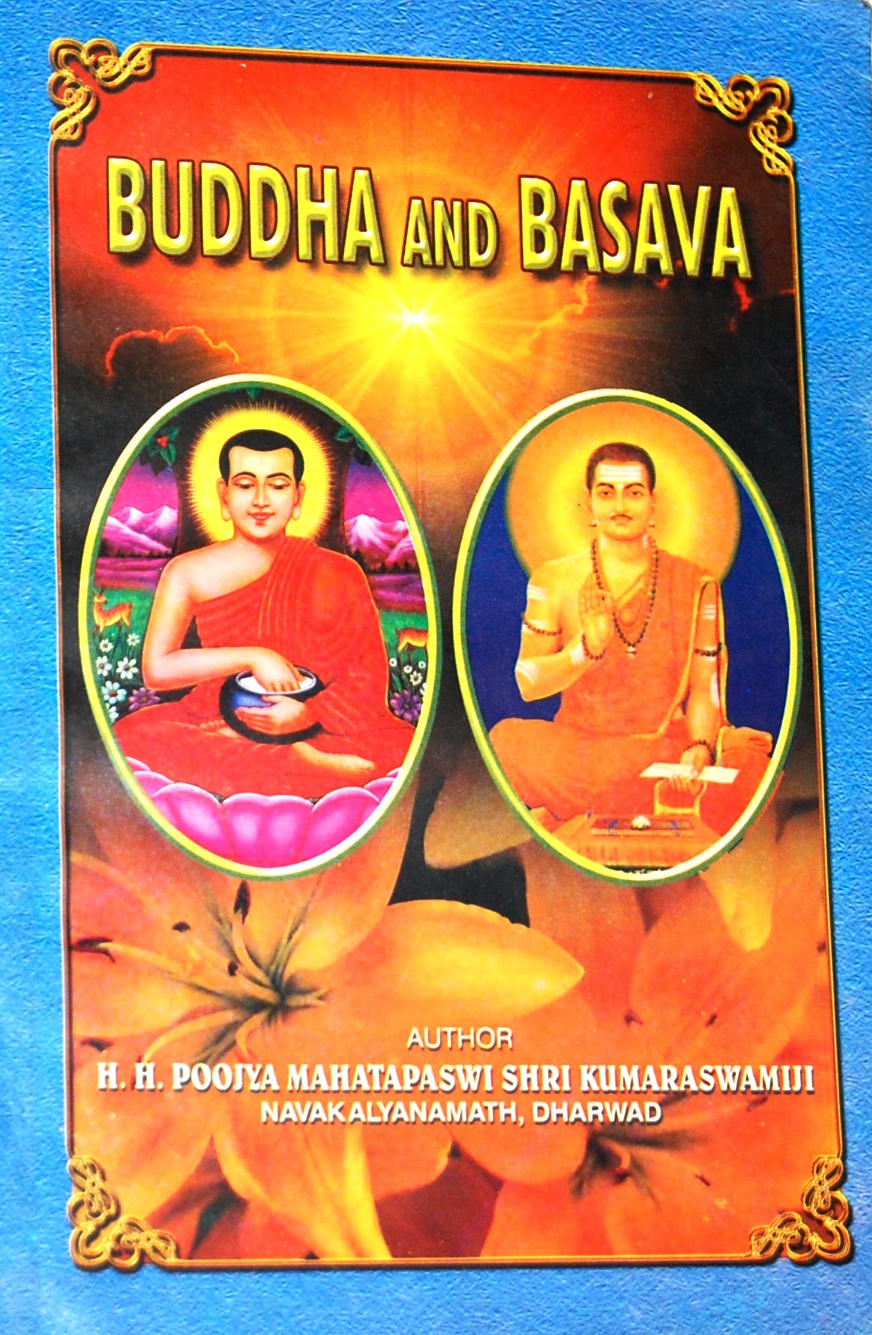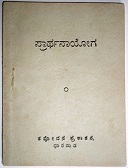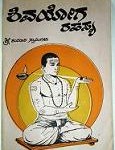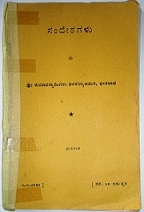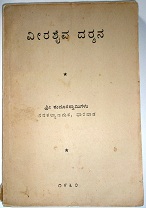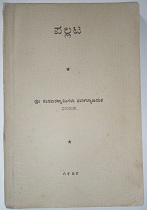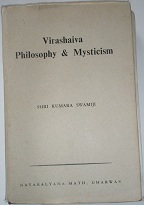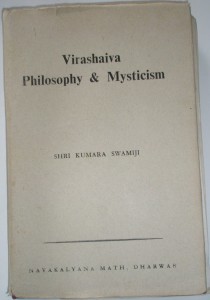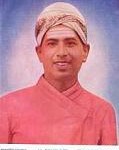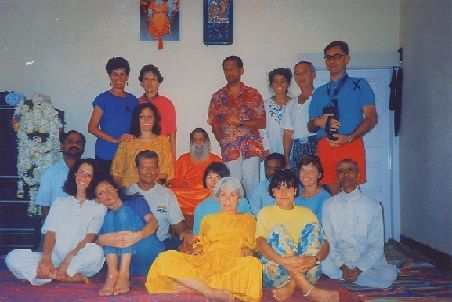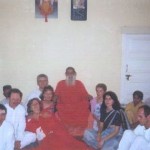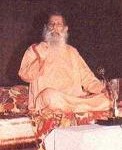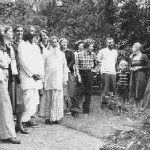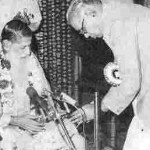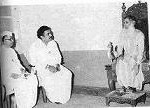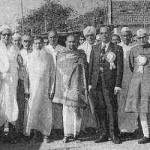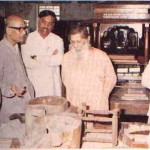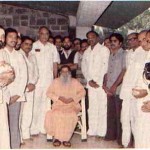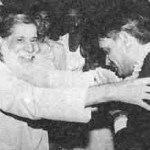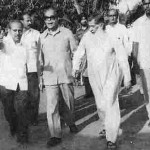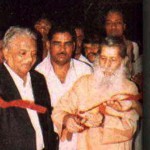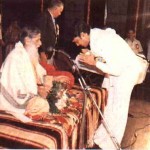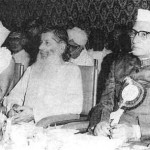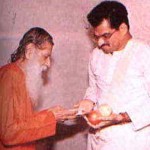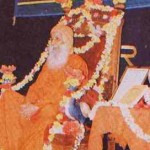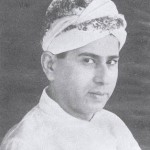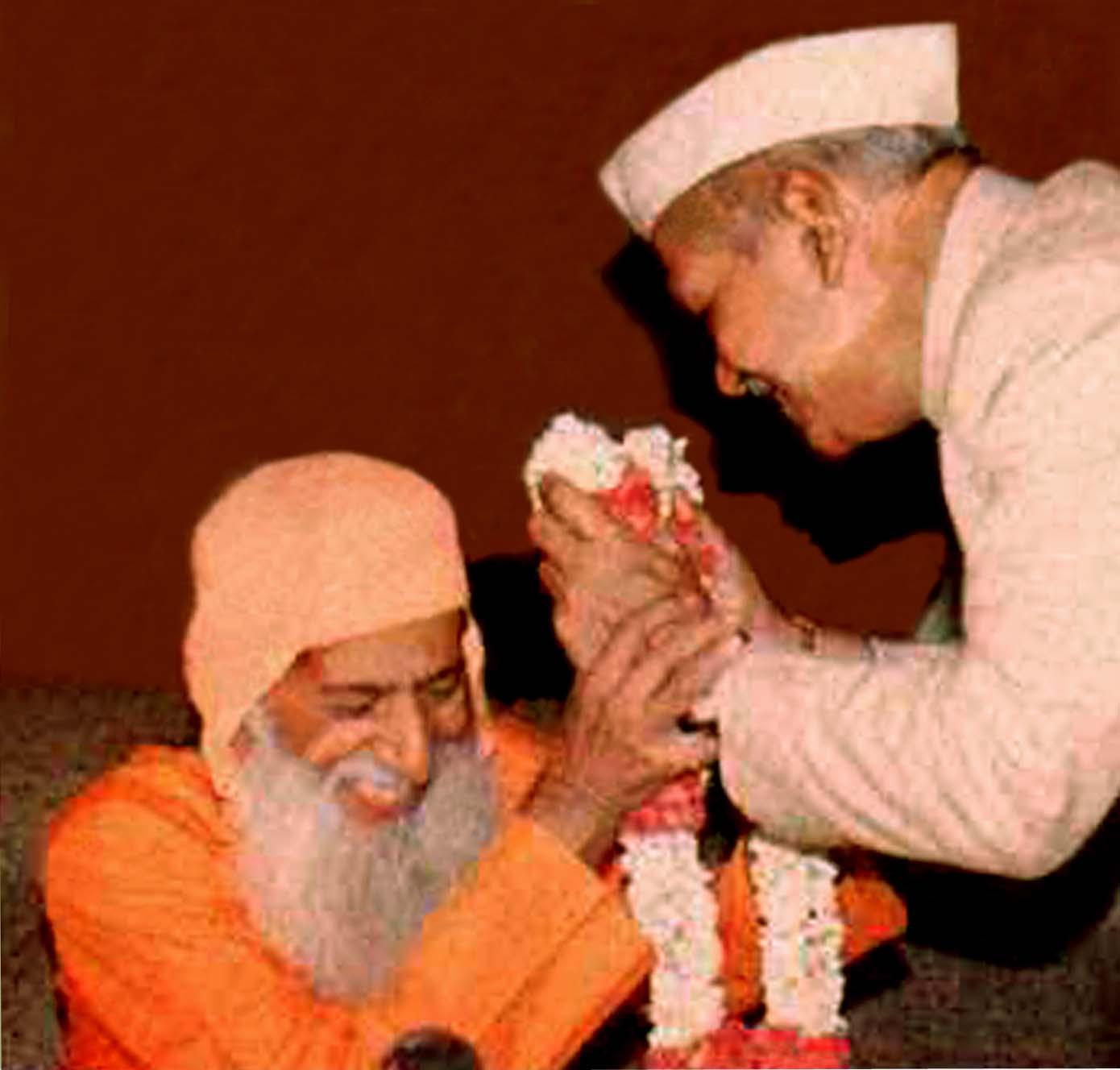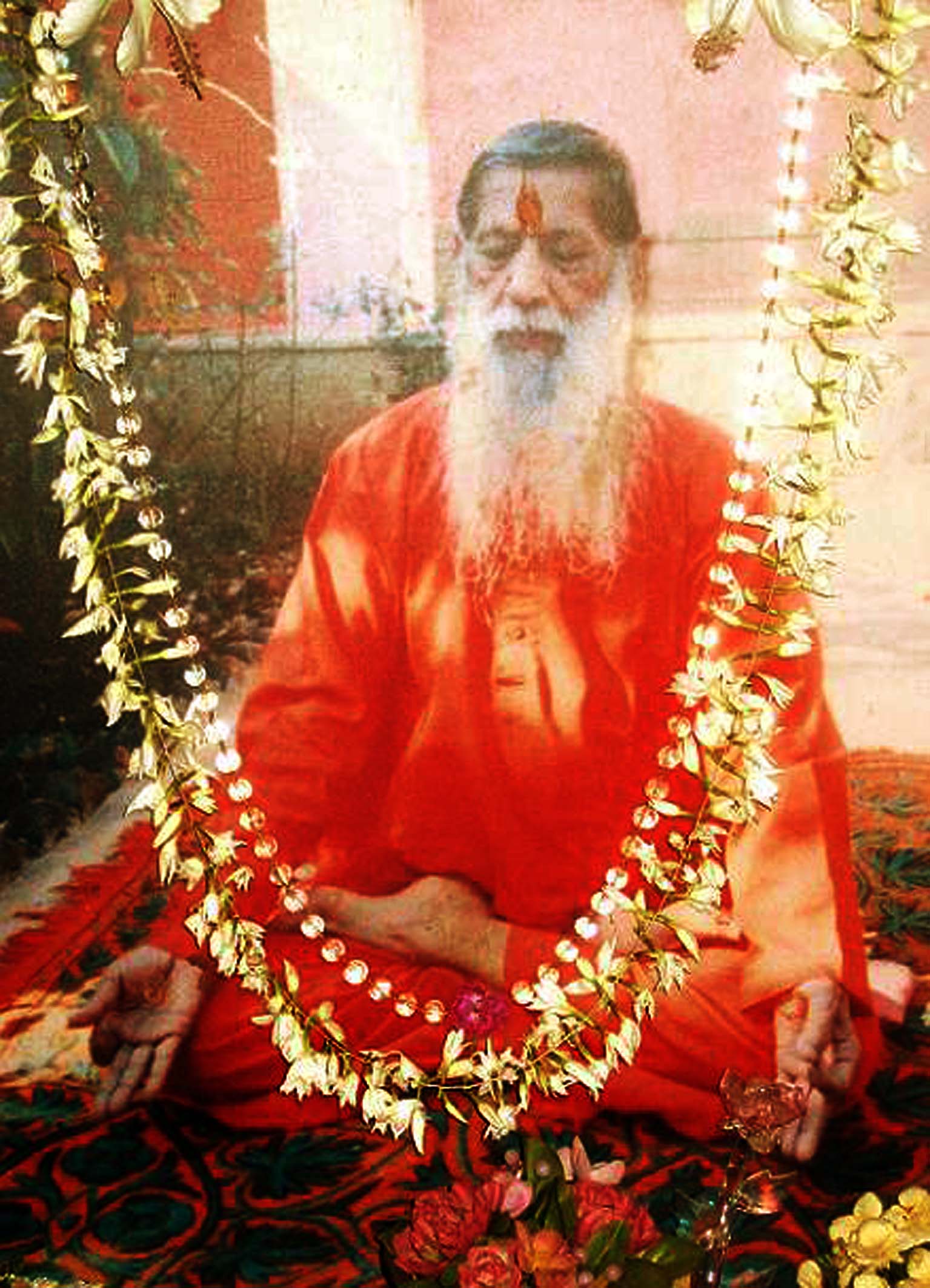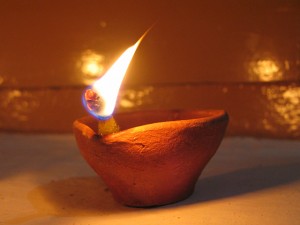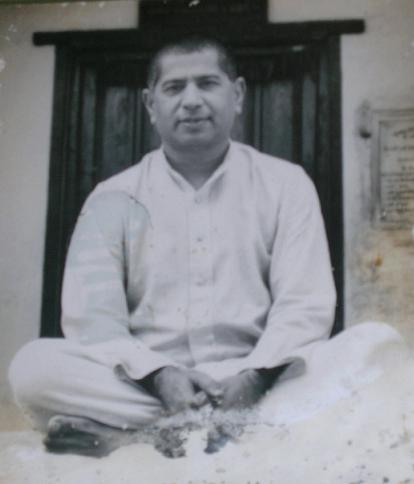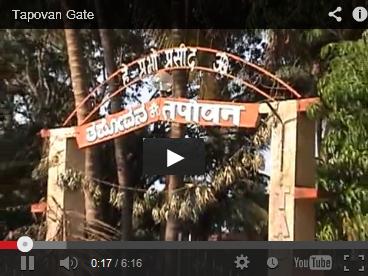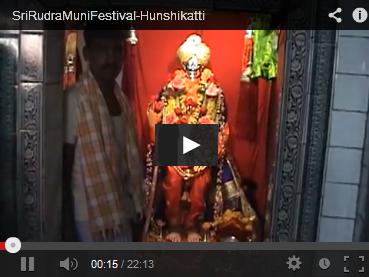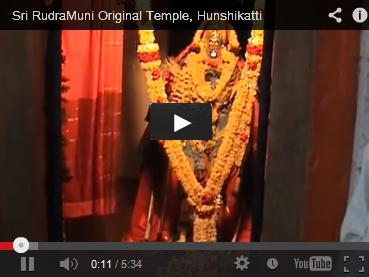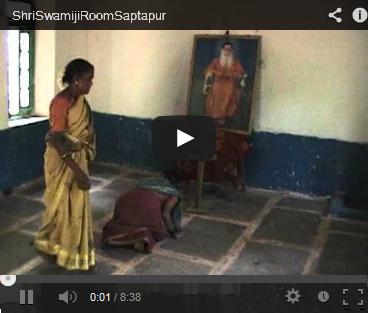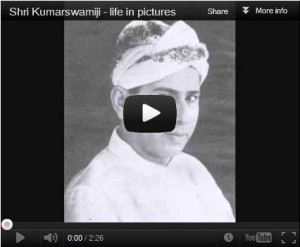Channabasavanna was prominent among the leaders of the Revolution led by the Shivasharanas of the twelfth century, and chiefly in the activities of the Anubhava Mantapa. During this period the Sharanas questioned all the interpretations of human values in order to update them and to make them relevant to the times. In this. attempt, the Sat-sthala, the system of six stages also became an object of their discussion in the Anubhava Mantapa. The present chapter is devoted to the new interpretation of this system, in which Channabasavanna played an important role.
Maggeya MAyideva addresses Basavanna as “the greatest of all the incarnations responsible for the formulation of Veerashaivism.” ChAmarasa prays: “Lord Sangana Basavanna, foremost of the preceptors, I salute thee.” From such invocations we may guess that in Basava’s time the task of reinterpreting the Slat-sthala must have been undertaken. It was, however, Channabasavanna who conclusively established the new interpretation. This is admitted by the contemporary Sharanas themselves.
“He (Channabasavanna) came to establish Veerashaivism by founding the sixfold method.”
“This is one of Sakila vachanas in which His Holiness Channabasavanna explained to the Jangamas all about the Sat-sthala from the throne of the Anubhava Mantapa in Kalyana.”
“Channabasavanna has laid on a firm basis a code of conduct governed by eighty-four lakhs of vows, sixty-four rules and sixty-six practices. He is the very foundation of knowledge. Channabasavanna Priya eleshvaralinga.”
“You came as the image of Sat-sthala, Channabasavanna.” “Well-versed in Sat-sthala.”
These vachanas corroborate the view that it was Channabasavanna that reinterpreted the Sat-sthala. He gave a new life and vitality to the system. In this sense alone, we shall consider him as the founder of the Sat-sthala. The idea of Advaita (A-dualism) was prevalent long before ShankarAchArya, who had his own unique point of view, and who, refuting the then existing dogmas, established the Advaita of his conception. Just as we consider ShankarAchArya the founder of the Advaita school, because he definitely formulated the loose monistic principles, so we can accept Channabasavanna as the founder of the Sat-sthala. What was the nature of the Sat-sthala prior to the Sharanas? Its origin can be traced to the Agamas. In KAmika, which is considered to be the first Agama, the term Veerashaiva is described. In KAmikAgama, besides the word Veerashaiva, we come across another concept, namely, Ishta-Linga. There is a reference to Ishta-Linga in Y?gajAgama:
“If one desires to eat keeping the Ishtalinga away from him,
Even if he drinks holy water, he verily drinks wine;
Even if he eats sacred food, he verily eats meat.”
This Agama holds that without Ishta-linga one should not receive PrasAda. KiranAgama also holds the same view.
Even though, in different Agamas, the main principles of Veerashaivism such as Ishta-Linga, PrAna-Linga are mentioned the VAtul, V?r, ChandrajnAna, Matanga and PArameshvara Agamas are more important as regards the detailed explanation of the Sat-sthala. We may take as an illustration the explanation of the Sat-sthala found in the Paramesvaratantra.
It is said in the Paramesvaratantra that devotion to Shiva is very essential before we go in for the Sat-sthala. Those who sincerely wish to adopt the path of Sat-sthala must be sure of Shivabhakti in their hearts. ParameshvarAgama clearly says that the Sat-sthala should not be explained to those who do not have faith in Shiva. As the Sat-sthala is composed of six stages, we should know what each means.
?Sthala’ here means a stage of the soul in its endeavour towards active identity with the Supreme. In the Bhakta Sthala the soul conceives the Guru, Jangama and Linga as separate entities and worships them in order of precedence. In Maheshvara Sthala, the seeker worships Guru, Linga and Jangama. A PrasAdi, that is, a soul which has reached the PrasAdi Sthala, considers all creation as the gift of God and therefore returns what he has received to Him through the Jangama and receives everything as His gift. One who is in the PrAnalingi Sthala sees Linga in everything and everything in Linga. The Sharana is free from the triple concupiscence and thereby gets lost in meditation. One who reaches the last stage, the Aikya Sthala, is so dead to his self that he is lost in Shiva. He has no need of worship, meditation, or Y?ga. As stanzas nine to thirty of the ParamesvarAgama have it, the omniscience of God (Parashiva) is Bhakta. His contentment is Mahesvara. His absolute command is PrasAda. His freedom is PrAna-Ling. His strength is Sharana. His omnipotence is Aikya. They are the externalisations of Parashiva’s six attributes. The sub-sections of the Sat-sthala are graphically pictured in the same work. Earthly life is compared to the ocean. The various needs of man’s life are grouped into six classes and are compared to billows:
Hunger, Thirst (Biological needs),
Grief, Affection (Psychological needs),
Birth, Death (Physical needs).
These are the six enemies of man, and can be conquered by adopting the Sat-sthala way.
In order to be fit for the Sat-sthala, the devotee (Bhakta) has to free himself from the three impurities, which is possible only through the guidance of an able spiritual-master (sadguru). The qualities of both master and disciple are described in detail in the Paramesvaratantra of initiation (D?ksha), when the Guru places his hand on the disciple’s head. The details of this technique are given in the next stanza:
O Parvati (the auspicious one)
please initiate this devotee;
Let him experience the touch
Of your palm placed on his forehead
While chanting the name of Lord Shiva.
The minute details relating to the ceremony of Ishtalinga and PrAnalinga are also given in the same book.
The Ashtavarana, namely, the Guru (spiritual guide), the Linga (emblem of God), the Jangama (moving Linga), the Padodaka (holy water), the Prasada (consecrated food) are explained as eight aids to the Sat-sthala. In the Paramesvaratantra, besides External Bliss, the creation of the world by Brahma is explained at length. The indivisible unity of the dual principle Shiva-Shakti, the living and non-living creation, the relation between the individual (Jiva) and the soul (Atma) arc dealt with in detail.
Though the ShivAgamas describe all the forms of Shaivism, they never fail to stress the superiority of Veerashaivism over the others. They, however, give much importance to the worship of the static Linga (SthAvaralinga). In the same ParamesvarAgama there is information about the static Linga and the materials required for its construction. It is stated that a Linga of the size of a jujube, a Linga of the size of a betelnut, a Linga of the size of a lemon should be established with the help of mercury, gold, silver, zinc, lead, marble, wood, brass and Shr?saila stone. The reward for the worship of each of these Lingas is also stated.
So, it should be noted that love towards creatures, devotion to Shiva, a visit to Shiva temple, and the wearing of Linga are said to be aids to salvation. Besides these, the ParamesvarAgama also makes mention of the consecrated fire as a means of salvation. It is used in the Veerashaiva initiation ceremony.
The Veerashaivism of Pramathas, including Basavanna is quite different from that found in the Agamas, and the differences between the two are fundamental. In Veerashaivism, as stated in the Agamas, we find the impact of other Shaiva sects and of the Vedic religion; it gives importance to the doctrine of Karma. The Veerashaivism of the Agamas propose JnAnna. Y?ga as the best means of liberation. This is different from the LingangasAmarasya, which was so important for Basavanna. The Agamas do not treat of Veerashaivism independently but as one of the components of Shaivism. Though the Veerashaivism mentioned there includes the Ashtavarana, the eradication of castes, the purification from the five impurities, the importance of Guru, Linga and Jangama and several other similar desirables, it had to be refined and brought up to date. They lay stress on external form of worship. Thus, the garb and symbols have an important place in its liturgy. In short, the Veerashaivism of the Agamas is only, an offshoot of MahAshaivism.
Basavanna and his compeers took up the Veerashaivism of the Agamas and revised it. It is, therefore, an evolved Veerashaivism. The Anubhava Mantapa gave a definite shape and interpretation to this better evolved way of living. Hence, Basavanna, and his compeers, who were council members, are co-founders of this revived Veerashaivism. Basavanna, however, was recognized as the head of this new religious group, or assembly, which began to attract more and more people from all strata of society.
Along with the evolution of Veerashaivism, we find the evolution of the concept of Sat-sthala. In this context, we should observe the following two vachanas:
“Step by step, I shall be Bhakta,
Step by step, I shall be Mahesvara,
Step by step, I shall be PrasAdi,
Step by step, I shall be PrAnalingi,
Step by step, I shall be Sharana,
Step by step, I shall be Aikya.”
Basavanna understood the Sat-sthala in one way. Channabasavanna refuted this interpretation in the following manner:
“Bhakta step by step,
Maheshvara step by step,
PrasAdi step by step,
PrAnalingi step by step,
Sharana step by step,
Aikya step by step,
Thus speak your Sharanas.
Have they taken the elixir of life?
Have they drunk nectar?
If, in any state, the Bhakta has not got
The experience of all the Sthalas,
That Bhakta’s life
Will come to nothing.
Here we see two interpretations of the Sat-sthala. The first understands them as a process with various stages to be reached one after another. Channabasavanna, refuting this affirmed that a soul can reach its perfection in any one stage. Thus, Channabasavanna, differing radically from his uncle, reinterpreted the Sat-sthala.
The Sat-sthala is the surest way of attaining salvation, as it demands the internal commitment and orientation of the total man towards God. This path takes for granted that everything created is good and orients all things towards the common goal God. The soul and the body, and, thereby, the material and the spiritual realities, have to be God-oriented. Thus, the gulf between the material and the spiritual, conceived by us because of our ignorance which is the fundamental (original) sin of man, is bridged over by the Sat-sthala. This spiritualization of man, and, in him, of the whole universe, is the fundamental objective of the Sat-sthala. The material and the spiritual must meet, nay, must become one. This is possible in man, and through man, in co-operation with the internal philosophy of the Sat-sthala. In order to materialise this ideal man must work. He should transform his own life – all his activities-by reminding himself that he has to live up to his vocation by dying constantly to his own self (anga) and thus live a life worthy of the Supreme (Linga). Dying to one’s self is the process of transforming Anga into Linga, the human into the divine. Then there is only one life, that is, the divine life. This state is LingAnga SAmarasya, the final attainment of the Sat-sthala. The Sat-sthalas are, according to Channabasavanna, the six ways of attaining the goal of our life. Let us consider them one by one in their classical order.
The Bhakta Sthala:
The novice in the Satsthala path at the Bhakta stage worships AcAralinga with firm faith All the humdrum activities of his daily life, along with pure intention, became spiritual and, therefore, meritorious. His desires cease to be carnal, and whatever he enjoys through his senses is offered to Linga. Since not self but Linga is the active principle in him, all actions are of Linga and for Linga.
Devotion founded on faith is, then, the characteristic of this way of spiritual life. All the activities of the Bhakta are vivified by love of the Supreme. Hence, all his enjoyments are, for him, particular graces from God. Because of his purity of intention and his life of constant self-offering, his whole self, including his body, becomes transformed into a spiritual reality. In a word, his active life, permeated with true devotion, becomes divine, or Lingamaya.
The Maheshvara Sthala:
As we have seen, the chief characteristic of the Bhakta Sthala is devotion. But the soul on its upward journey does not stop here. It goes higher, though not necessarily. The man who seeks perfection goes from devotion to firm faith in God. Thus, the Bhakta becomes a Maheshvara. Faith is nothing but a constant love of God. One loves God so much that one firmly believes in him and therefore, places his entire confidence in Him. He tastes both the sweet and the bitter of life as coming from God. He receives everything as a gift from the Supreme. The faith of a Maheshvara is enlightened through the spiritual master, who is in God’s place. He spiritual master as if they were God’s. is Gurulinga.
The PrasAdi Sthala:
listens to the words of his The master, therefore,
The soul which loves Shiva with indomitable faith becomes Shiva’s favoured one; God pours into him grace, through which he begins to understand God himself. This knowledge results in worship of the Lord, Shiva Linga. As the ?self’ decreases, the divine in him increases. Everything becomes God’s gift to him. Owing to this deep understanding of all things as God’s, he grows in humility, which is the hallmark of the spiritual man. All his impulses take a new turn, towards a greater spirituality. Such a man is known as PrasAdi.
The Pranalingi Sthala:
The aspirant to spiritual growth enters into a new relation with God-Linga. Here he realises that all his actions, all his movements, all progress in the universe is because of the Prime Mover-the Jangama Linga. This realisation gives a spiritual dimension to all his activities. Thus, his action itself becomes prayer. Prayer in action is the achievement of the soul at this stage.
The Sharana Sthala:
When a soul reaches this stage, it finds delight and security in the service of the Lord. It acquires intimacy. It becomes the faithful spouse of the Almighty. The soul looks on itself as the beloved and on Him as the lover. Everything that falls on its ears is the sweet voice of the Master. Life is no more a burden but a delight. This spiritual joy in the company of the beloved is the perfection that a soul reaches at this stage.
The Aiky Sthala:
The Aikya Sthala is the highest stage a soul can reach. In this stage, the mind and heart of the individual move in consistence with those of MahAlinga, the Supreme. The soul’s desires, affections and thoughts are now only echoes of God’s desires, affections and thoughts. The creature and the created, the individual and its source are in mutual harmony. Now it is no more the selfish ?I’, but the supreme God (MahAlinga) that lives and acts. The beloved soul is lost in the lover. They are not two but one. This complete union is the height of spiritual perfection and the soul’s achievement in the Aikyasthala.
The following vachanas give a beautiful and concise description of the Sat-sthala:
He who knows
That he, with humility, should do
Is a Bhakta.
He who has the sense of discrimination,
Whose devotion is confirmed and
Whose desires are subdued,
Is a Maheshvara.
He who receives not what is not offered,
But enjoys with Linga what is offered,
Is a PrasAdi.
He who identifies himself with life
but is ever vigilant, knowing the times, Is a PrAnalingi.
He for whom nothing exists
Save Linga, and who exists for Linga,
Is a Sharana.
He who enjoys the indescribable bliss
Which lies beyond the great experience
Gained through good conduct
Is an Aikya.
“If he is a Bhakta, he should be
Free from the desires of mind and body.
If he is a Maheshvara, he should avoid
Another’s wealth
Another’s concerns, another’s wife
If he is a PrasAdi, he should forget
The pleasures of taste and
Keep his body pure.
If he is a PrAnalingi, he should renounce
His body and merge with Linga.
He who enjoys, not self, but Him
In everything is a Lingaikya….”
The Sharanas not only systematized this Sat-sthala technique, but gave it a new orientation. Channabasavanna gave it a psychological dimension. Knowledge in man originates in sensory experience. Sensory knowledge is the basis for intellectual knowledge or thought. First, the senses apprehend facts and the mind comprehends. What the intellect understands, the will desires, for will is the effective faculty of man. If what is desired seems to be bright, the intellect passes a positive judgement, if not, a negative one. When a man satisfies all desires coming from the senses for the sake of his own small self and forgets the ultimate source of all things, he does not find fulfilment. Hence, he is born again. Thus the cycle of birth and death starts.
In the soul that has adopted the Sat-sthala way there is no place for selfishness. Self-oriented life has given place to God-orientation. Hence, one’s all senses, internal and external, one’s desires, feelings and emotions seek only Linga (guru), not Anga (self). The senses become aids in the pilgrim’s progress towards Linga. Everything is received as grace and enjoyed as such. Every experience becomes a communion. The man who has walked in the Sat-sthala path becomes a priest constantly offering through himself the whole creation to MahAlinga.
We are not immortal, we have not drunk nectar, we have not taken the elixir of life. This is our last chance for achieving salvation. Therefore, any stage should be a “Sat-sthala” stage. In these words Channabasavanna has explained the secret of coordinative Sat-sthalas to Basavanna. It seems this is a new realisation of Channabasavanna; according to him, a novice in the path of the Sat-sthala need not begin from the Bhakta Sthala. Everyone is in a creative stage of spiritual growth. It is from there that he has to proceed. I be nature of the beginners may differ. Why should one who lives in faith give it up and regress to the Bhakta stage? He knows from experience that one could start from any stage and achieve the rest.
So far, we have dealt with the outlines of the Sat-sthala as understood by the sharanas. Now let us pay attention to the details given by them. The Sat-sthala path may be taken from one’s very conception. Jiva (the Soul), which gropes in the dark forgetting his true self, begins to see the truth through the merits of his past life. That enlightened moment is the auspicious time for realising God’s immanence. It is in the foetus stage that the arrested Jiva becomes purified. The purified human being will gradually come to know his true nature. That is the embryonic stage of knowledge. Once the soul comes to know its true self, it feels disgusted with its present stage. Then the enlightened Guru will shower his grace on him, and, by the imposition of his hands on the head, will give him precepts, enjoin prayers and duties, and then put a Linga on him.
The Sat-sthala is classified into three stages which the soul has to pass through. In this language, Bhakta and Mahesvara are in the TyAgAnga; PrasAdi and PrAnalingi are in the Bh?gAnga; Sharana and Aikya stages are in the Y?gAnga. In the TyAgAnga, the individual gives up all earthy pleasures. In the Bh?gAnga, he enjoys them through, in and with Linga. In the Y?gAnga, he finds his delight in being one with Linga. The worship of Ishtalinga, PrAnalinga and BhAvalinga should go hand in hand at all the stages, in all the Angas. The sense pleasures that are offered to Ishtalinga become a means of communion with Linga; the whole body becomes a continual oblation (KAyArpana). Thus, if all the faculties – speech, taste, smell, understanding and willing, and their activities are offered, it becomes a gift of all our powers (KaranArpana). The highest of all our offerings is the gift of our willing. Devotion enlightened by knowledge, strengthened by will, and realised in action brings the soul towards unity with God. The culmination of the process of becoming one with Shiva is the salvation (Mukti) of the soul.
Basavanna and his companions have explained the whole process of this devotion on the basis of their own experience. The devotion explained by Basavanna is a peculiar one. It is not a means to an end, but an end in itself. God, out of love for Himself, worships Himself, loves Himself, and thus realizes His own self as a perfect and free Being. This self-realisation is the perfect bliss of the Supreme Soul. This realisation can be attained by the soul which thinks itself as separate from God, only through devotion. Thus, it becomes the means of salvation, of realization of the true Self. This concept of devotion is not found in the Veerashaivism of the Agamas.
The Sharanas, besides making a contribution to spirituality, have also made a great contribution to theology. They have introduced many a new concept regarding the nature of the Parabrahma (Supreme Creator). While the ShivAgamas describe him as niskala, sakala-niskala and sakala, the Sharanas go deeper and describe Him as Sunya, Sarvusunya and Sarvasunyaniralamba. Sarvasunyaniralamba is the stage of the Parabrahma when he has no mans of regarding His existence and no knowledge of Himself. He has the Shakti in Himself, but He is motionless. He is compared to a calm sea, to a peacock’s egg. The waves are in the sea, potentially, but they are actuated by the wind. Similarly, the Parabrahman has the Shakti, that is responsible for the creation of the living and the non-living in Him. In the new terminology of sunya, nissunya and sarvasunya, the final stage is that of sarvasunya. Thus, the concept of the Parabrahman in the Vachana literature is quite different from that found in the Agamas.
The Sharanas had greatly advanced in speculation. For example, their treatises on the rise of Shakti, the emanation of Chit-shakti, NAda, Bindu and Kala; the rise of MahAlinga, accompanied by CinnAda, Cidbindu, Citkale and M?lacittu, (the original) and finally the five SAdakhyas, namely, KarmasAdAkhya, KartrasAdAkhya, M?rtisAdAkhya, Am?rtisAdAkhya, and ShivasAdAkhya bears witness to the Sharanas’ philosophical acumen.
The five SAdAkhyas are off shoots of MahAlinga. Along with them many spirits sprang forth, from the spirit the sky; from the sky, the air; from it the five elements. Thus, the sky and the five elements originated. In the explanation of these five elements and thirty-six fundamental principles there is much similarity between the Agamas and Vachana literature. The difference lies in this, that the Sharanas approved of a philosophical conclusion only after testing its validity through experience. Owing to this experimental method, many a change had to be introduced in the repertory of philosophical conclusions. Thus, they seem to have reduced the fundamental principles from 36 to 25. Channabasavanna dealt anew with the evolution of the universe, the bondage of souls, and similar philosophical themes. Though his vachanas and books include many of the philosophical topics discussed in the Agamas, they also contain some new theories. Lastly, the speciality of Veerashaivism lies in the reinterpretation of Shivay?ga in its theoretical and practical aspects.
This information on – ‘Sri Chennabasaveshvar’ – is collected from ‘various sources on internet, books, magazines’.
References
[1] Dr. R. G. Hiremath, M. A., Phd. Vice-Chancellor, “SHRI CHANNABASAVESHVARA, Life and Philosophy”, 1978, Karnatak University, Dharwad











